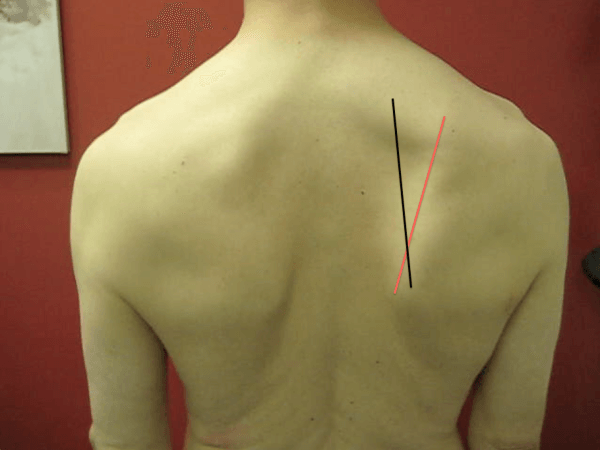
Get Up to Get Down: The Impact of Scapular Movement on Pitch Location
Today’s guest post comes from physical therapist Eric Schoenberg. Eric is an integral part of the Elite Baseball Mentorships team.
Every baseball player on the planet has heard their coach say “stay on top of the ball”, “get out in front”, and/or “throw downhill”. It is an easy thing to say, but a little more difficult to teach. A common response that I hear from players that I work with is: “I understand what the coach is saying, but I don’t know how to actually get my body to do it”.
There are many mechanical reasons why a pitcher will struggle to create this downhill plane. (e.g. front leg stability, trunk tilt angle). However, on the movement side of things, one of the main culprits that we see is a lack of scapular upward rotation. If you are a frequent visitor to this blog, you know that EC has hit on this topic for years. I wanted to add some thoughts to this critical concept.
If a pitcher lacks the ability to “get up” (insufficient scapular upward rotation and/or elevation), he will not be able to effectively get his hand out in front to maximize velocity. Pitchers will describe this feeling as “cutting the ball off” or “feeling stuck”. The result is a decrease in velocity and difficulty “getting down” in the zone. It is very common for this to occur later in the season once the off-season training effect has been lost and the predictable loss of range of motion (shoulder flexion, upward rotation, hip and thoracic mobility) kicks in.
The most effective pitchers share three things in common: consistent velocity, consistent location, and health. None of these are possible with faulty scapular movement patterns.
The best time to establish proper scapular upward rotation is in the off-season (NOW!). The challenge comes with educating the athlete on how to not lose this motion during the season.
By now, we are aware of the importance of wall slide variations, back to wall shoulder flexion, and trap raises. However, the message of consistency with these exercises EVERY DAY during the season cannot be overstated. This is akin to brushing your teeth. A habit needs to be established and it then needs to be repeated. Every baseball player that I see in my office for elbow or shoulder pain comes in with faulty scapular movement. This is certainly not the only thing that leads to pain in pitchers, but it is certainly a good place for us to be looking early on.
A great exercise that we have been using to emphasize “getting up and out in front” is the One-Arm Band Rotational Row from a Low Setting.
This drill is much more about the deceleration phase than the actual rowing pattern, however all phases of the movement are important. I prefer to use a band instead of a cable due to the increased velocity of the recoil. This is a great drill to use in a training or warm-up program. With that said, I find the best application is to be used in a pre-throwing program (preferably the last drill before a pitcher picks up the ball to begin throwing).
Set-Up: Wide base to emphasize hip mobility. Front foot should mimic where the land foot is in the delivery. Back foot and hips are rotated fully so the athlete is “squared up” in the sagittal plane. Coaching from the Posterior View will give you a good vantage point to see this.
Instruction: Initiate the rowing motion from the hips first, then the thoracic spine, then the scapula, and finally the humerus. Make sure the athlete’s elbow doesn’t end up behind the line of his body. Back foot should rotate to mimic the position on the rubber with the hip hinged and loaded. Cue the athlete to decelerate the band with his body (core, front hip) and not just with his arm. Coaching from a 90 degree angle to the side will show this the best.
A key component for a pitcher to develop/maintain velocity and location is to make sure that their body is in a stable position to deliver their arm (and the baseball). The One Arm Rotational Row accomplishes this by via the following avenues:
1. Single Leg Strength
a. Land Leg: Proper stability and balance to accept weight, stop forward momentum, and translate force from the ground up the chain.
b. Drive leg: Ability to hinge back into drive hip and not translate forward (toward 3rd base for a RHP) or collapse into valgus. Keeping weight through the whole foot and not just on the toe
2. Stable core throughout delivery – especially as trunk and hips start to separate
Leaking into anterior pelvic tilt or lumbar extension will drive scapular downward rotation and depression (resulting in the hand moving under or around the ball, as opposed to staying behind the ball).
3. Optimal Thoracic Positioning
This drill drives thoracic flexion moment to allow for a congruent platform for the scapula to ride up and create the desired extension at ball release.
Give this drill a try with your athletes (make sure to train both sides) and emphasize consistency with their scapular upward rotation exercises in order to develop a more durable arm with improved velocity and location.
If you are interested in learning more about our approach to managing baseball athletes, we’d love to see you at one of our Elite Baseball Mentorships. The next three-day course is June 23-25, with May 23 serving as the early-bird registration deadline.



